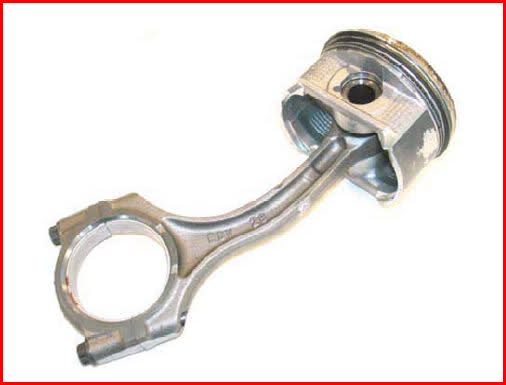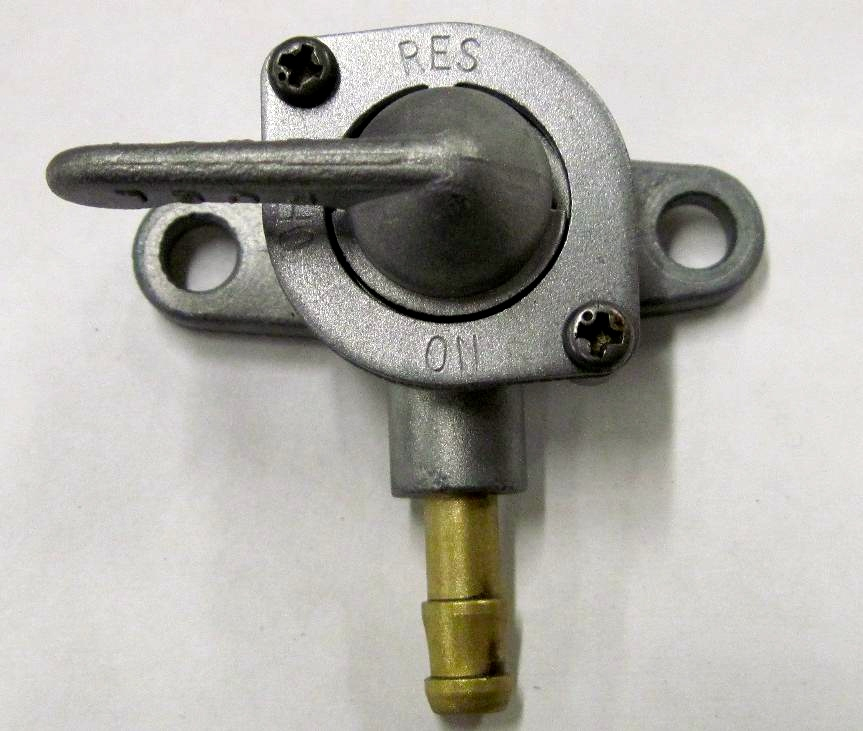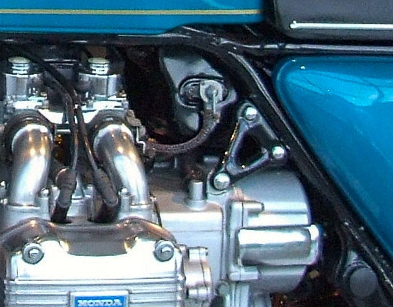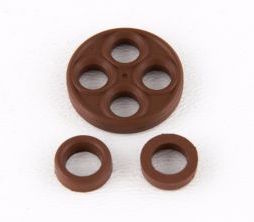What is a petcock? Why is important to vintage motorcycle owners?

A petcock is simply a 2-way or 3-way valve that controls fuel flow out of the fuel tank.

The valve positions for a manual petcock are “on,” “off” and usually “reserve.”
Vacuum petcocks are less important for this discussion since they are usually left in the “run” position and are opened and closed automatically by the engine vacuum of a running (or not running) engine. Vacuum petcocks may have a “prime” setting to bypass vacuum operation and aid starting after layups.
If you have a manual petcock, you should develop the ingrained habit of closing the petcock to “off” every time you shut off the engine! I’m dead serious!
Why? There are several reasons:
- Fuel flows from motorcycle tanks (mostly) by gravity. Shutting off the fuel petcock reduces the risk of gasoline leaks during non-use. That reduces fire risks. Some vintage motorcycles have mechanical or electric fuel pumps. These bikes are still equipped with petcocks for safety. Early GoldWings have mechanical fuel pumps since the fuel tank is beneath the seat. However, these GoldWings actually rely on a combination of gravity and fuel pump action to move fuel to the carbs. To wit: If the tank on an early GoldWing is over half full, fuel will flow to the carbs via gravity …even when the engine is not running!
- If you leave the petcock “on” during non-use, you are relying entirely on one (FT500) to six (CBX) very fickle carburetor float valve assemblies to do their job perfectly! If these valves aren’t perfect, fuel can flow past them …causing an overflow which can eventually find it’s way (on some bikes) into the combustion chamber. Unlike air, fuel cannot be compressed. On the next starting attempt, a hydrolocked cylinder can result in catastrophic engine damage. Like a bent connecting rod! That’s a serious punishment for not using your petcock as designed!
What’s the “Reserve” position for? It’s provided to give you a low fuel warning. The main “on” position draws from a higher tube inside the fuel tank which also provides a somewhat cleaner fuel supply …beneficial for keeping your carbs clean. When you run out of fuel in the “on” position, you typically have a couple inches of fuel in the tank for the “reserve” position to draw from. That’s handy to get you to the next fuel stop.
Some riders never use “reserve” for fear of introducing dirty fuel into their carbs. Others use the “reserve” position exclusively – believing that it’s a better path to constantly clean fuel. I happen to like the low fuel warning, so I always ride in the “on” position. But on most rides, I do switch to “reserve” for a couple of minutes to keep the reserve path exercised and clear.
Manual petcocks are stone age simple and rarely cause trouble. Using them periodically is actually beneficial. It’s helpful to keep the internal parts free and pliable. The internal rubber components do eventually wear and deteriorate …typically causing obvious external leaks must be corrected for safety.
Some manual petcocks are not designed to be serviced and must be replaced as an “assembly.” Fortunately, the petcocks on early ‘Wings can be rebuilt with quality Viton Kits …even the ones that are “sealed” with rivets. Here’s the Randakk Kit for early “Wings:
If you have a vacuum petcock, these should be tested periodically with a hand-operated vacuum pump (like a Mity-Vac) to check that the petcock diaphragm is intact, holds vacuum and actually opens and closes the valve as designed. I not a big fan of vacuum petcocks. On my own bikes, I have typically replaced vacuum petcocks with high quality manual petcocks from Pingel.
Resurrecting a bike from long-term storage? Consider this from Norton Muzzone of Legacy Cycles:
“We’ve had customers bring in bikes that don’t turn over …even with a strong battery. Then, we had the pleasure of removing the spark plugs and enjoying a “fountain of gas” in our faces!
For bikes that have been in storage, it’s a good practice to remove the spark plugs then carefully turn them over a couple of times to check for fuel in the cylinders.”
Remember, a closed petcock can save lots of grief. The engineers put it there for valid reasons. Use it!





Randakk,
I just read your article on fuel petcocks, & I guess I never really gave it much thought. Right now I have 2 GL1500 Goldwings & was wondering if there is a “bolt up” petcock upgrade, or should I just plan on putting in a 1/4″ or 3/8″ ball valve. I don’t really trust the vacuum petcocks because all it takes is a pinhole & you are stranded!
Hello
I am running into an issue with my carbs or petcock that has baffled me. The bike runs fine on fuel in the float bowls, but as soon as I switch the petcock to “on” or “reserve” while the bike is running, it kills it. I have had these carbs off about ten times, two new sets of floats, two rebuilds, cleaned thru and thru, so I am just baffled. The bike originally had a vacuum petcock which was bypassed by the PO and a generic petcock installed and vacuum hose blocked off. Any ideas would be GREATLY appreciated.
1981 Honda CB650C (precursor to Nighthawk)
Hi Randakk, i have just rebuilt my 75 GL1000 with your kit and with the video, the bike starts fine but will not rev from idle, i twist the throttle and nothing happens, i can see the carb linkages moving, if i hold the throttle about 1/4 open the rev slowly rise (takes about 5 seconds) to 2000 rpm then she revs fine above that. Release the throttle and she idles nicely but the same issue with not revving below 2000 rpm. Valve lash and timing look spot on. any idea’s?
Things that come to mind with that symptom:
1. Blocked idle jet(s)
2. “Sticky” CV slide(s)
3. “Sticky” ignition advance
4. Vacuum leak
5. Poor synchronization
6. Problem with throttle cable / linkages
I was draining my fuel tank for transport. The petcock position was in the off position bbn and gas was coming out. Switched it to on and the flow stopped. Can anyone explain this?
Possibilities:
1. Incorrect use of petcock (position different than what you expect)
2. Petcock internals need replacement
Thanks Randall! You might also want to recommend to people racing that it is best to switch to a Hi-Flo Pingel petcock especially if they installed a larger carburetor! Just learned that lesson with a FT500 Ascot single, fuel starvation at high speeds due to differences in the size of the stock petcock small output and the larger carb intake.
Wendy:
Indeed. A race-prepped FT500 is quite thirsty! A high-flow Pingel petcock is definitely recommended in such cases.
I had one customer that never used the reserve setting. Remember that water is heavier than fuel and will settle at the lowest point of your tank. When the customer was running low on fuel he switched to reserve, pulled in a slug of water (while running down the road at 70 mph on his high compression motor), the increased compression hammered the piston top into the ring land, pinching the ring to lock and the motor suffered severe damage at that point. BTW, ethanol laced fuel attracts water. Although I won’t mention a name brand here, I highly recommend using a fuel additive that prevents the effects of ethanol.
Randakk’s petcock parts do the trick, I’ve installed them on many bikes.
J.R. Good information! Petcocks should be used frequently.
Using the Reserve periodically can minimize the issue of water layering at the bottom the tank. Using a water dispersal additive (like Heet) is always a good idea too …especially on lightly used bikes.
If these precautions are not followed, then using the Reserve setting can be risky as you noted!
Excellent, thank you